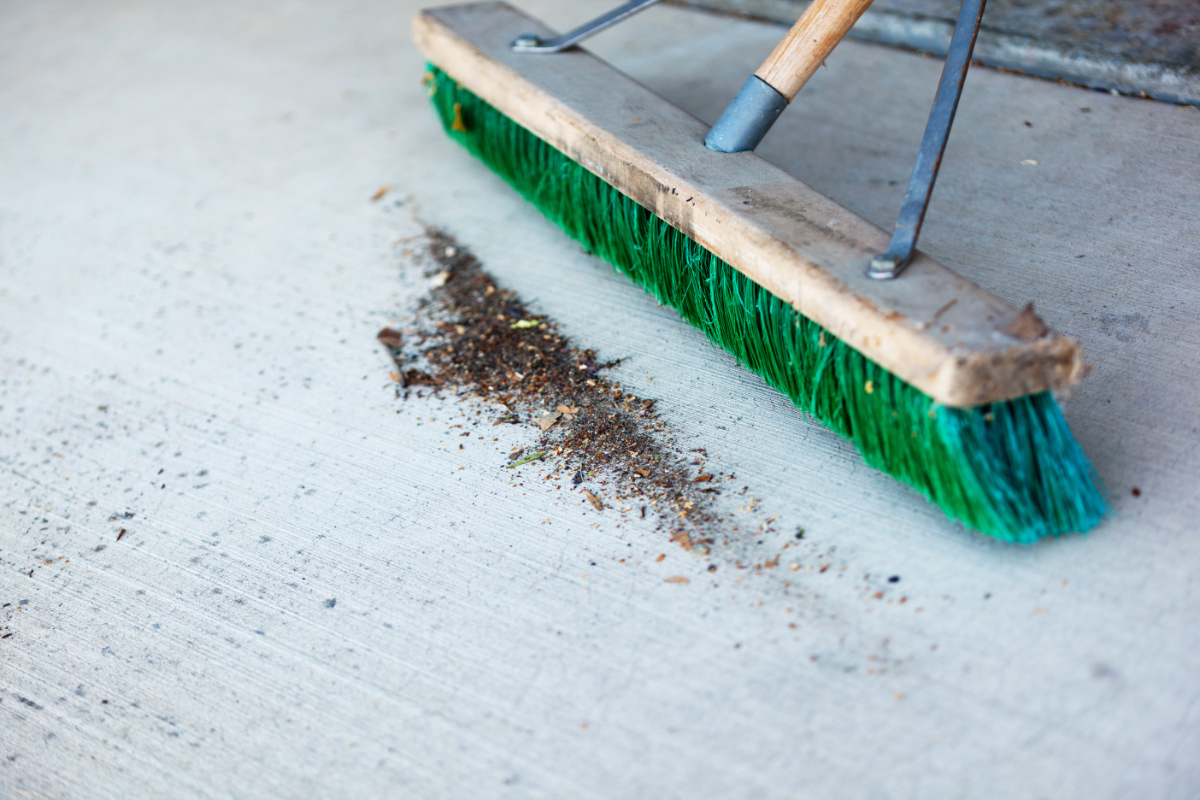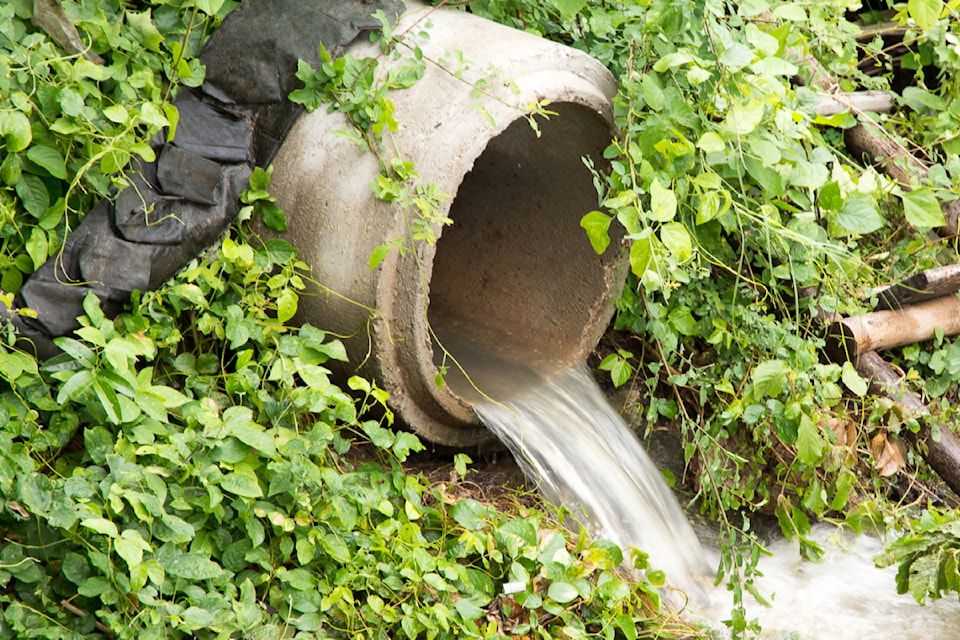Water that lands in our gardens and yards, whether from rains, sprinklers, hoses or watering cans, eventually ends up in our groundwater, streams, lakes and ocean.
However, as natural features like trees and topsoil are replaced with roads, driveways and buildings, water quickly flows over these impermeable surfaces, transporting pollutants into our storm drain system and ultimately into our creeks, rivers and streams, where it causes harm to fish and other aquatic species.
A changing climate is expected to bring a significant increase in winter rainfall and storm events, putting an added strain on our local waterways.
The good news is that small changes you make now in your yard and garden can collectively have a large impact, and lead to a more diverse and resilient ecosystem – one that's better adapted to handle our changing climate.
1. Sweep clean instead of power washing
Power washing uses a lot of water and can dislodge pollutants like paint chips or oily sediments, causing chemical residues and soaps to flow into our storm drain system, harming aquatic life and habitats. Clean sidewalks, driveways, decks and balconies with a brush or broom instead.
If you must power wash:
- Sweep the surface.
- Use absorbents on oil spots.
- Avoid cleaning compounds.
- Identify the nearest storm drain and prevent surface runoff from entering it.
- Capture or filter out any paint chips that may have been washed off.

2. Avoid pesticide and fertilizer use
Chemicals such as pesticides and fertilizers can pollute soil and groundwater and remain in the environment for a long time. When it rains, especially after a dry summer, these pollutants wash into the region's stormwater system, accumulating in creeks, streams and shorelines where they can have disastrous effects on aquatic species.
Limit the need for these chemicals by practicing natural gardening techniques:
- Use organic compost or leaf mulch, which acts as a fertilizer while improving soil quality and retaining moisture.
- Use native plants to encourage beneficial creatures in your garden, including spiders, bees, ladybugs, frogs and bats – they'll help control pests and enhance local biodiversity.
- Make your own natural pest deterrents, like vinegar and soap sprays to deter plant-eating caterpillars and moths.
3. Remove roof moss – naturally!
Moss thrives on shaded, north-facing roofs in cool, damp climates, and a large build up of moss on asphalt shingles can cause damage to your home. However, chemicals from roof cleaning and moss removal have increasingly polluted our local creeks and streams. A quick google search will recommend simple ‘DIY’ solutions to moss removal such as putting powdered soap, liquid dish detergent or high concentration bleach solutions on your roof. When these substances wash off into local waterways, they can harm and even kill local fish species, especially juvenile salmon.
You can manage roof moss naturally, without harmful chemicals:
- Regularly clean gutters and trim overhanging branches shading your roof.
- Use a soft bristle scrub brush or rake instead of a power washer to remove moss.
- Consider professional services for safe access to roofs and ask about their natural or eco-friendly options.
Learn more about preventing pollution and maintaining watershed health at crd.bc.ca/livegreen You can also sign up for a CRD Live Green Learning Series event this summer and fall – FREE workshops with local experts exploring how to build a rain garden, manage and harvest rainwater, grow native plants and more! Learn more at crd.bc.ca/livegreen or crd.bc.ca/events
